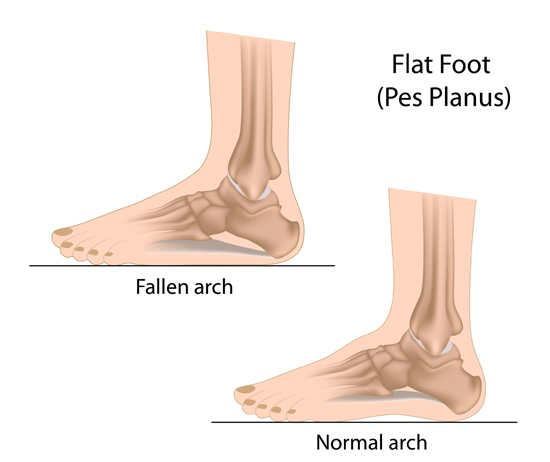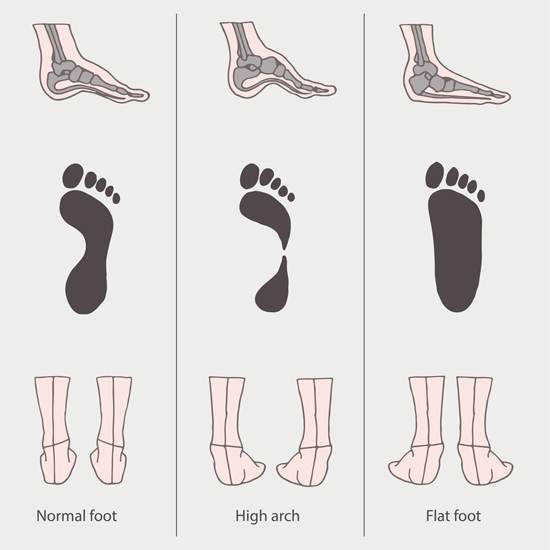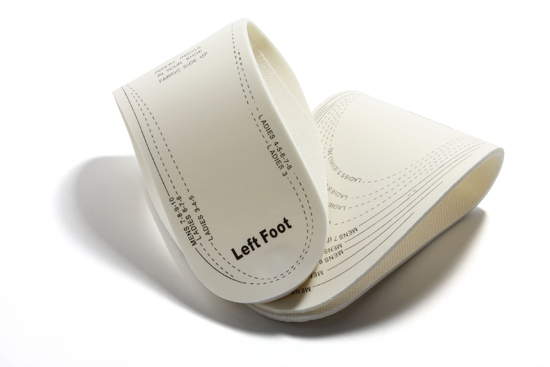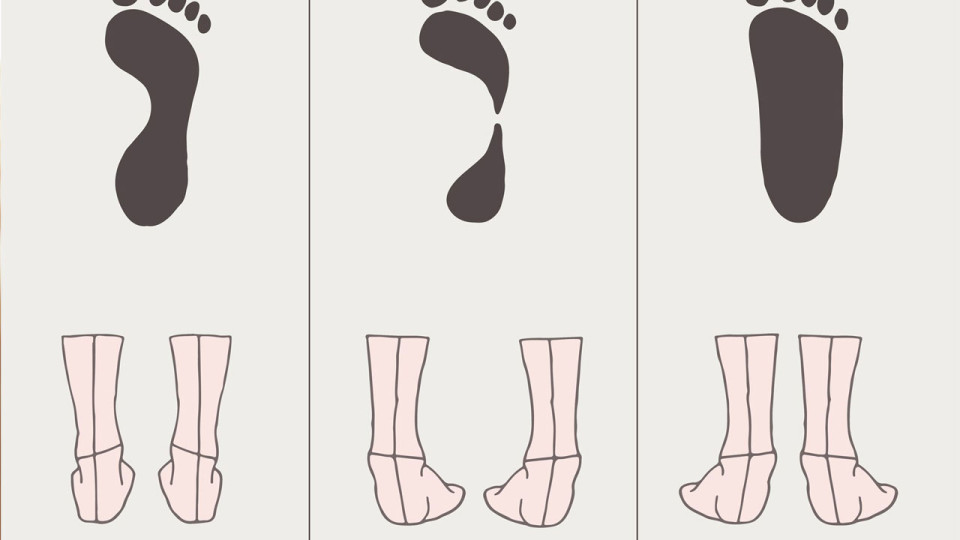Running is an activity that requires considerable movement of your feet and exertions of your leg muscles. If you have flat feet, you might be having some pain and wondering what causes it and why it looks different from most other people.
Having a flat foot may affect your running, hence choosing the best shoes for flat foot runners is important especially you are wearing it for a marathon race. Let’s first understand what exactly is flat feet and how running with flat feet or high arches can affects you.
What is Flat Feet?
“Flat feet” is actually a condition where the medial longitudinal arch of a person’s foot flattens or collapses. The outcome of that is a foot that looks flat when viewed from the side.
As compared to a normal foot, a very low or no arch exists on a flat foot. This flattening of the arch leads to a host of problems including heel pain, bunions, ankle pain, knee pain and lower back pain.
What Causes Flat Feet?
Flat feet are usually inherited and sometimes flat feet can be caused by tarsal coalition, which is an abnormality that develops in the womb when bones are fused together. A flat foot is normal in infants and toddlers, because the foot’s arch has yet to be developed.
Flat feet in an adult usually happen for women who are over 40 years old. It usually develops when the tendon that supports the foot arch gradually stretches over time.
Some experts believe that standing or walking with high heels for long periods of time may be the cause of the tendon to become stretched.
Risk factors for flat fee include:
- Aging
- Diabetes
- Obesity
- Arthritis or Rheumatoid Arthritis
- Foot or ankle injury
- Nervous system or muscle diseases
How Will Flat Feet Affects Me?
Having low or no arches is normal for some people. Flat feet usually do not cause problems, but they might affect your daily routine like walking and running as they can put a strain on your ligaments and muscles which resulted in pain in your legs.
If your foot over-pronates, your shoes will wear out more quickly. Over-pronation can also damage your ankle joint and Achilles tendon.
How To Check If I Have Flat Feet?
Flat feet are easy to identify while standing or walking. You have flat feet if the arches on the inside of your feet are flattened, which made the entire soles of your feet to touch the floor when you stand up.
You can also visually inspect your feet for the arch or getting them damp and stepping onto a dry, flat surface.
If you see a full imprint of your entire foot, then you may have flat feet. Most people have a noticeable space on the inner part of their foot (the arch). The height of the arch varies from person to person.
To know if your foot will over-pronate, when you walk or run, stand on tiptoe or push your big toe back as far as possible to see if the arch appear.

Types of Flat Feet?
There are 2 categories of Flat feet: Flexible Flat Feet and Rigid Flat Feet.
A person has Flexible Flat Feet when an arch can be seen on the foot when it is raised off the ground (non weight-bearing). The arch only flattens when weight is placed on it.
A Rigid Flat Foot is one where the foot is flat as a result of the bone structures and not the arch tendons. Majority of people with Flat Foot have a Flexible Flat Foot.

Why Do I Get Pain From Running?
The various issues that typically arise from flat feet are not due to the feet themselves, but from over-pronation. Pronation is a normal rolling in of the foot at the end of every step we take in a run to absorb impact on the feet.
Over-pronation is the case when the feet roll inwards too much, past the point necessary for shock absorption.
At this point, the ankle joints are extended, causing the lower leg bones, and subsequently the upper leg bones to rotate inwards. This places stress and can cause pain on the ankles, lower leg muscles, knee joints, and hips.
Runners who overpronate may be more susceptible to shin splints, back problems and tendonitis in the knee.
Since pain is a result of over-pronation, and not directly from flat feet, some flat-footed runners do not experience any problems even though they have flat feet, simply because they do not over-pronate.
But the chances of over-pronating for a person with flat feet are much higher.
How Do I Treat My Flat Feet?
Having flat feet is a medical condition that is largely derived from one’s genes, but yet is not commonly treated in a medical way.
In fact, podiatrists (certified foot specialists) in Singapore are not recognised as doctors and thus cannot prescribe medications.
The most common remedy at the moment is the use of orthotics (braces) or insoles. They can either be customised to a person’s foot or pre-fabricated to provide support for the foot.
Can Flat Feet Be Fixed or Cure Fully?
Only about 1 or 2 out of every 10 children will continue to have flat feet into adulthood. Flat feet usually disappear by age six as the feet become less flexible and the arches develop.
Treatment for flat feet and fallen arches depends on the severity and cause of the problem. Treatment is usually not needed if flat feet cause no pain or other difficulties. Treatments include:
- Stretching exercises
- Physical therapy
- Orthotic devices, shoe modifications, leg braces, casts, or supportive foot
- Surgery for severe case
- Painkillers
- Insoles
Best Flat Feet Exercises
Avoid activities that aggravate your condition. Participate in low-impact activities — such as walking, biking or swimming — rather than jumping and running activities. Losing weight can reduce stress on your feet.
Here are some exercises to improve strength and flexibility in the feet and ankles recommended by orthopaedic surgeons and physical therapists.
1. Heel cord stretches
- Stand with your hands resting on your waist.
- Keep one leg forward and the other leg extended behind you.
- Press both heels firmly into the floor.
- It is essential to avoid arching the back and to keep it straight. Bend the knee of the front leg until you feel a stretch in the back leg.
- Hold for 30 seconds and then rest for 30 seconds. Repeat nine more times.
2. Calf raises
- Stand on a stand or flat surface and lift your heels as high as you can.
- Hold the higher position for 5-10 seconds, and then lower back down to the floor slowly.
- Then hold the upper position and pulse up and down for 30 seconds.
- Repeat 20-25 times in 2–3 sets.
3. Tennis ball rolls
- Sit on a chair with a tennis under your right foot.
- Maintain a straight spine as you roll the ball forward and back under the arch of the foot.
- Then switch to the opposite foot.
- Do this for 2–3 minutes for each foot.
4. Arch lifts
- Stand with your feet inline with your hips.
- Make sure to keep your toes in contact with the floor the whole time, roll your weight to the outer edges of your feet as you lift your arches up as far as you can.
- Release your feet back down. You’ll work the muscles that help to lift and supinate your arches.
- Repeat 15-20 times in 2–3 sets.
5. Toe raises
- Stand and press your right big toe into the floor and lift up your other four toes for both of your feet.
- Press your four toes into the floor and lift up your big toe.
- Do each way 5–10 times, holding each lift for 5-10 seconds.
6. Stair arch raises
- Stand on steps with your left foot one step higher than your right foot.
- Use your right foot for balance as you lower your left foot down so your heel hangs lower than the step.
- Slowly lift your left heel as high as you can, focusing on strengthening your arch.
- Rotate your arch inward as your knee and calf rotate slightly to the side, causing your arch to become higher.
- Lower back down to the starting position slowly.
- Repeat 15-20 times in 2–3 sets on both sides.
7. Towel curls
- Sit on a chair with a towel under your feet.
- Root your heels into the floor as you curl your toes to scrunch up the towel.
- Press your toes into your foot.
- Hold for a few seconds and release.
- Remember to keep the ball of your foot pressed into the towel. Maintain an awareness of the arch of your foot being strengthened.
- Repeat 15-20 times in 2–3 sets.
Are There Shoes For People With Flat Feet?
When someone with Flat Foot is looking for a pair of running shoes, it is important look for shoes that reduce over-pronation.
The shoes that are designed for this purpose are commonly known as stability and motion control running shoes.
The basic design principle of most stability and motion control shoes is that they have a firm midsole that prevents excessive pronation. Different brands employ different technology to do so but they share this common principle.
Stability shoes are designed for mild to moderate overpronators. Motion control shoes are designed for severe pronators and runners with a heavier stride.
3 Things to Note When Choosing Your Running Shoes
These are some other pointers to look out for when selecting your pair of flat feet shoes for running. You should make sure that:
- Outer sole of the shoe bends only at the toe area and not the middle where the arch is. This makes sure the arch is supported.
- The heel counter (back part of the shoe) is rigid and cannot really be bent forward. This provides support to the heel bone.
- The toe-box is of the correct width to accommodate typically wider flat feet. Some designs come in varying toe-box width.
Best Flat Feet Running Shoes
Below are some models that have been highly rated by runners with Flat Foot. My personal favourite is the Brooks Adrenaline GTS 13 because it got rid of my back aches completely.
Stability Shoes For Flat Feet Runner
- Asics Gel Kayano 19
- Asics GT – 2000
- Brooks Adrenaline GTS 13
- Brooks Trance 12
- Mizuno Wave Inspire 9
- Nike Zoom Structure 16
- Nike LunarEclipse 3
Motion Control Shoes For Flat Feet Runner
- Asics Gel Evolution 6
- Asics Gel Foundation 11
- Brooks Beast (men) / Ariel (women)
- Brooks Addiction 10
- Saucony ProGrid Stabil CS2
If you have a brand preference or an existing shoe that you like, you can find a useful brand-to-brand comparison of running shoes here.
It gives you a rough idea which models are comparable across the different brands.
Remember, wearing the the right footwear will make a big different if you have flat feet. Shoes that don’t offer support or let you add arch support insoles will make your flat feet feeling tired and in pain. Flip-flops, high heels and sandals can also aggravate pain associated with flat feet.
What About Insoles? Do They Work?
To provide good support for flat feet, one needs adequate support both from outside the shoe and within the shoe.
The insole that comes with running shoes typically provides no support at all, and is usually just a thin piece of foam material.

A good pair of insoles will help to provide firm support for the heel, arch and sometimes even the metatarsal bones as well as heel stabilisation to help prevent overpronation and increases shock absorption.
This ensures that the gait is aligned and does not cause undue stress on other parts of the lower body.
Flat Feet Running in a Glance
Information For A Flat Feet Runner
What causes flat feet?
Flat feet are usually inherited and sometimes flat feet can be caused by tarsal coalition, which is an abnormality that develops in the womb when bones are fused together. A flat foot is normal in infants and toddlers, because the foot’s arch has yet to be developed. Flat feet in an adult usually happen for women who are over 40 years old. It usually develops when the tendon that supports the foot arch gradually stretches over time.
How to check if I have flat feet?
Flat feet are easy to identify while standing or walking. You have flat feet if the arches on the inside of your feet are flattened, which made the entire soles of your feet to touch the floor when you stand up. You can also visually inspect your feet for the arch or getting them damp and stepping onto a dry, flat surface.
Can flat feet cause problems?
Having low or no arches is normal for some people. Flat feet usually do not cause problems, but they might affect your daily routine like walking and running as they can put a strain on your ligaments and muscles which resulted in pain in your legs. If your foot over-pronates, your shoes will wear out more quickly. Over-pronation can also damage your ankle joint and Achilles tendon.
How do you fix flat feet?
Only about 1 or 2 out of every 10 children will continue to have flat feet into adulthood. Flat feet usually disappear by age six as the feet become less flexible and the arches develop. Treatment for flat feet and fallen arches depends on the severity and cause of the problem. Treatment is usually not needed if flat feet cause no pain or other difficulties.
What are the best flat feet running shoes?
Some of the recommended running shoes for flat feet are:
- Asics Gel Kayano 19, Asics GT – 2000
- Brooks Adrenaline GTS 13
- Brooks Trance 12
- Mizuno Wave Inspire 9
- Nike Zoom Structure 16
- Nike LunarEclipse 3
- Saucony ProGrid Stabil CS2
- Brooks Addiction 10
- Asics Gel Foundation 11
- Asics Gel Evolution 6
- Brooks Beast (men) / Ariel (women)





